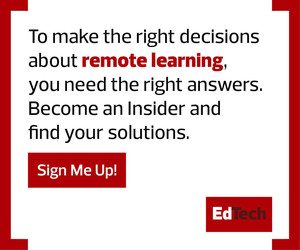What Does Asynchronous Learning Mean?
According to Jenay Robert, a researcher at EDUCAUSE, “asynchronous learning generally refers to a teaching modality in which students complete coursework independently and on their own schedules. Asynchronous learning is most commonly associated with online or hybrid (partially online) courses.”
Students surveyed in the recent EDUCAUSE report highlighted key benefits of this asynchronous approach, noting that competency-based frameworks can more easily accommodate students’ disabilities, family obligations or work schedules.
ISACA Senior Vice President of Product Ryan Taylor, meanwhile, says “the modality of asynchronous learning has always been happening — the past two years just accelerated the impact. But pressure makes the demand. As asynchronous tools have evolved over time, the focus has shifted from completion rates to measuring student understanding.”
READ MORE: Transforming higher education for the hybrid future.
Asynchronous Learning Helps Students Achieve Learning-Life Balance
In much the same way that work-life balance has become a post-pandemic priority, learning-life balance is now critical for student success. To help achieve this goal, two components are critical:
Tailored Experiences
“It’s not just about throwing content out there,” Taylor says. “How do teachers create an engaging environment? Students now expect a level of personalization that includes both educational and social elements tailored to their learning styles.”
He points to the 40-20-40 training model developed by professor Robert O. Brinkerhoff, in which 40 percent of instructor effort is put into pre-teaching activities such as goal setting and adaptation to student needs. Another 40 percent goes into post-learning functions, such as discussion and feedback, while just 20 percent is dedicated to instruction and exercises.
This model is critical to student success in an asynchronous approach, since it recognizes that learning doesn’t only happen in sync with teaching; it happens at multiple points in time.
Click the banner below to learn more about incorporating hybrid learning this semester.













